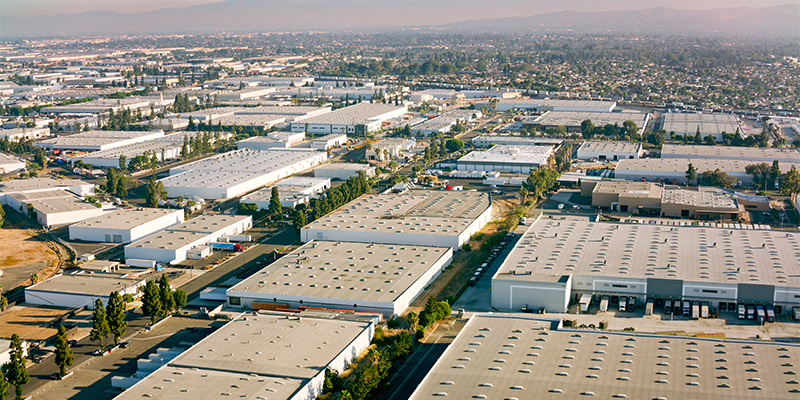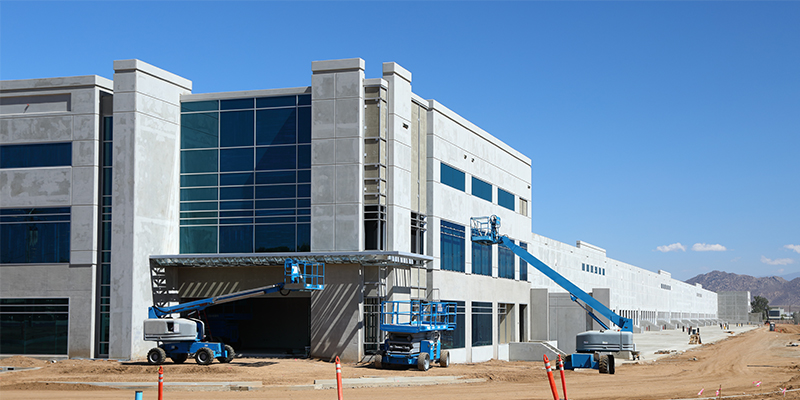By Natalie Fidlow, CFA
“If you continue to do the same thing over and over in a changing market and expect the same results, that’s insanity,” said Art Makris, head of customer led development at Prologis, referencing investor Howard Marx at the I.CON East conference this week in Jersey City, New Jersey.
Anne Strauss-Wieder, a freight and public policy instructor at Rutgers University, moderated a lively discussion with experts Derek Keil, AIA, senior project manager and principal at BL Companies; Seth Weisberg, chief revenue officer at Element Logic; and Makris. They shared their strategies for site selection and building requirements amid supply chain changes.
What are the biggest changes you see?
There used to be a focus on ramping up distribution to customers, Keil said, but now [tenants] are trying to figure out how to handle production domestically and stay flexible and nimble. Weisberg agreed and views this from an automation perspective. There used to be a reliance on static storage – the most cost-effective option. Today, if you invest in storage with automation and flexibility, you’re likely to be better off in the long run.
“There are a lot more options for automation today than five years ago,” Weisberg asserted. The newest challenge for clients is to avoid “analysis paralysis;” to overcome this, it’s important to educate [them] and simplify automation.
“We are in the downside cycle,” so Makris emphasized the need to get back to the basics. “On the capital side, basis, cash flow, credit and term matter.” On the construction side, clients want to be closer to the consumer. This leads to hub-and-spoke models to locate clients closer to their customers. “Our 2025 theme is to increase the speed to the consumer,” he said. That means smaller warehouses closer to home.
How important is power, and how much power do facilities need?
“It’s all about location, location, location. Then it’s labor, labor, labor. And now, it’s power, power, power,” said Makris.
He added that if there is a 1 million-square-foot building, there needs to be at least 10,000-12,000 amps of power per square foot. Strauss-Weider added that she’s heard of developers who won’t consider anything less than 18,000-24,000 amps. However, when developers attempt to acquire it, the utility companies claim they’re at capacity and can only provide 800 amps, according to Makris. “If you can’t secure the power needs beforehand, you have to move on because it’s a three-to-seven-year process to fix it,” he added. According to Weisberg, the chief concern used to be fire protection in a building. That’s now replaced with energy, because the process of fixing fire protection is much easier than securing energy.
In response to an audience question about different power sources, Makris stated that collaborating with your power company on substation upgrades will be beneficial. Finding a building that relies solely on wind and solar energy is challenging. He concluded that “Nuclear is coming back and [it’s] a consideration as they look for land sites.”
Strauss-Wieder summed it up: “If you don’t have the power, you might have a zombie building.”
What are the new labor considerations?
Keil answered that there will be less minimum-wage workers. “You’re going to be looking for a higher [skill] level of staff to maintain automation. They will be more educated, more interested, more involved,” he said. “And you must have an eye toward amenities.”
With hourly workers, flex workers, and high-tech labor, you need to understand their differences, Makris said. He knows that warehouse workers won’t drive more than 20 to 25 minutes, while skilled workers will drive 40 to 45 minutes. However, skilled workers desire more amenities, such as fitness centers and aesthetically pleasing environments.
Prologis has introduced the use of flex workers who are fitted with RFID tags to monitor how they’re working in real time.
What type of automation should tenants implement?
Drawing from his own experience, Weisberg advises clients to “keep it basic but dense.” Tenants used to look at column spacing, heights and dock doors. “Now, you’re looking at [automated storage and retrieval] systems like an Autostore that are going to be extremely dense.”
How do you configure buildings to handle disruption?
The conversation shifted back to prioritizing power. “We are seeing tenants demand 100% back-up power,” said Keil. Alternatively, they will use the back-up power for two years while their central systems get up and running. Keil said he talks to the utility to secure a commitment about the power immediately and then purchases grid equipment toward the front-end of deal funding. Makris says that they pre-order their generators on spec.
Weisberg attempts to create automation systems that are redundant and hybrid, allowing humans to operate them if the technology fails.
What keeps you up at night?
Uncertainty in general, said Weisberg, specifically tariffs. He used to discuss a five-year pipeline with clients, but now they’re unwilling to commit due to the level of uncertainty created by the tariff’s back-and-forth nature.
Makris agreed, stating that consternation is prolonging the closing of a deal. More people are getting involved in decisions, making it challenging to keep all variables and costs aligned while the deal is finalized.

This post is brought to you by JLL, the social media and conference blog sponsor of NAIOP’s I.CON East 2025. Learn more about JLL at www.us.jll.com or www.jll.ca.








